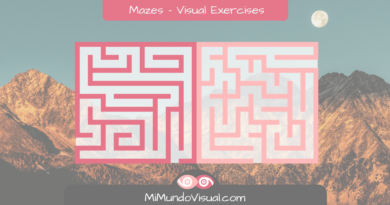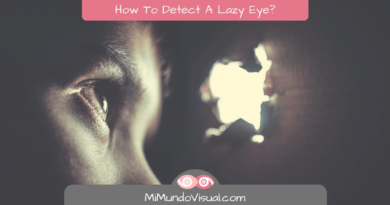How Do I Know If I Have A Lazy Eye?
Table Of Contents
Suppose you suspect your child or you suffer from lazy Eye or Amblyopia. In that case, seeing an eye specialist for a complete evaluation is essential.
However, some characteristics can help us determine if we have a Lazy Eye. So, let us explore: How Do I Know If I Have A Lazy Eye?
In today’s article, we’ll look at some of the most common symptoms of lazy Eye or Amblyopia.
Lazy Eye is a vision condition clinically known as Amblyopia.
It is a condition that is fairly common in children. Still, it can significantly impact a child’s ability to see clearly.
Therefore, as parents, it’s a good idea to know the common symptoms of Lazy Eye or AmblyopiaAmblyopia. This way, we can help detect the issue early and seek out the support of an eye specialist as soon as possible. This will greatly improve our child’s chances for visual recovery.
Before we list the most common symptoms of Amblyopia or lazy Eye, let’s refresh our definition of Amblyopia!
More about amblyopia in children
- 7 Tips On How To Be Successful With Amblyopia Therapy For Your Child
- How To Remove An Eye Patch Without Pain?
- 6 Eye Patch Therapy Inconveniences We Are Not Told About
- How To Choose The Best Eye Patch For My Child?
- Contact Lenses For Children With Lazy Eye?
- Prepare For Your Visit With the Eye Doctor?
Download Free Amblyopia Guide

What Is Amblyopia or Lazy Eye?
What Does it mean to have a 'Lazy Eye'?
Lazy Eye or Amblyopia is a fairly common visual condition. It occurs when without any alteration in the ocular structures, there is a decrease in visual acuity that can derive from different causes.
What Are The Symptoms Of Amblyopia or Lazy Eye?
Some of the most common symptoms that people with Amblyopia have are the following:
- Blurred vision or double vision in one Eye
- Difficulty reading or seeing objects up close, so we move closer to the paper to write, draw or read.
- Continuous eye rubbing, itching, and/or redness in the eyes.
- Difficulty in perceiving details or identifying small objects
- Frequent headaches
- Difficulty in assessing both the depth and distance of objects
- Frequent tilting of the head when the task at hand requires visual strain
- Squinting or winking to focus in order to avoid blurred vision
- Difficulty focusing on an object
- Turning one Eye inward or outward
- Difficulty following an object (only with that amblyopic Eye)
- The uneven vision between one Eye and the other
- Visual pain and/or fatigue, especially when working with a computer screen.

However, it is crucial to remember that these symptoms can also result from other vision problems, injury, or eye disease. Therefore, we insist that it is vital to visit an ophthalmologist and/or optometrist so that they can evaluate our particular case and determine what is wrong with us.
In short, if we suspect that we may have a lazy eye, the best thing to do is to seek the help of a specialist as soon as possible so that they can perform the relevant tests and start the most appropriate treatment as quickly as possible.
More About Amblyopia or Lazy Eye
- How Do I Know If I Have A Lazy Eye?
- What Causes Amblyopia Or Lazy Eye?
- How To Detect A Lazy Eye?
- What is Amblyopia?
- 6 Eye Patch Therapy Inconveniences We Are Not Told About
- How To Choose The Best Eye Patch For My Child?
- Contact Lenses For Children With Lazy Eye!
- 5 Questions About Lazy Eye In Adults!
- Lazy Eye In Adults – Little Everyday Difficulties That May Be Due To Amblyopia!




